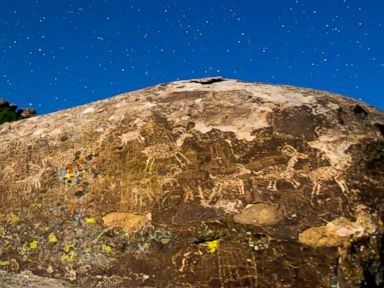Where protected lands stand after national monument review
President Donald Trump earlier this year ordered U.S. Interior Secretary Ryan Zinke to conduct an unprecedented review of 27 monuments established by former presidents over more than two decades on lands and waters revered for their natural beauty and historical significance.
Trump announced Monday that he will shrink two Utah monuments, but he has not revealed his decision on the others yet. He launched the review after calling the land protections by Democratic former Presidents Barack Obama and Bill Clinton federal overreach.
Zinke recommended reducing four large monuments in the U.S. West and modifying rules at six others, according to a memo leaked this fall. He also has said he's recommending the creation of three new monuments.

')
He didn't suggest eliminating any monuments, despite urging by some Republicans in Utah and elsewhere.
Here's a breakdown of Zinke's recommendations:
———
MONUMENTS TO BE DOWNSIZED
Trump said he will shrink the Bears Ears and Grand Staircase-Escalante national monuments spanning millions of acres in Utah in line with Zinke's recommendation.
Zinke also advised trimming Gold Butte in Nevada and Cascade Siskiyou in Oregon, but the president didn't announce a final decision on those monuments Monday.
———
NO DOWNSIZING, BUT RULE CHANGES
Zinke proposed more access for people and industry and other changes at six monuments:
— Katahdin Woods and Waters, Maine: Allow trees to be cut on parts of the monument and ensure that "traditional uses" like snowmobiling and hunting are taken into account in a management plan.
— Northeast Canyons and Seamounts, Maine: Allow commercial fishing in the first marine monument in the Atlantic Ocean.
— Pacific Remote Islands, Pacific Ocean: Allow commercial fishing within the marine monument that covers nearly 87,000 square miles (225,330 square kilometers) near Hawaii.
— Rose Atoll, Pacific Ocean: Allow commercial fishing in the 13,500-square-mile (34,965-square-kilometer) marine monument around the Rose Atoll in American Samoa, a U.S territory.
— Organ Mountains-Desert Peaks, New Mexico: Conduct assessment of border-safety risks, prioritize public access and request congressional authority to give tribes co-management.
— Rio Grande Del Norte, New Mexico: — Prioritize public access, request congressional authority to give tribes co-management, and get more funding to protect cultural and historical objects.
———
STAYING INTACT
During his travels to visit some of the monuments under review, Zinke said these six monuments would remain untouched: Upper Missouri River Breaks in Montana; Sand to Snow in California; Grand Canyon-Parashant in Arizona; Craters of the Moon in Idaho; Hanford Reach in Washington; and Canyons of the Ancients in Colorado.
Zinke has been silent on the other 11 monuments under review, from Giant Sequoia in California to the Marianas Trench southwest of Guam, but they are presumed to remain intact.
———
NEW MONUMENTS
Zinke also recommended Trump create three monuments, including one in his home state of Montana:
— Badger-Two Medicine in an area within the Lewis and Clark National Forest in northwest Montana.
— Medgar Evers' home in Jackson, Mississippi, where the first field secretary for the NAACP was assassinated on June 12, 1963. Evers organized boycotts over segregation during the civil rights movement.
— Camp Nelson near Nicholasville, Kentucky, which was established in 1863 as a 700-bed Union Army hospital, supply depot and recruiting center for African-American troops in the state.






